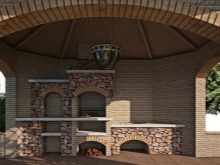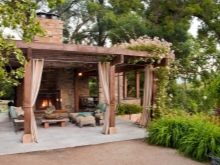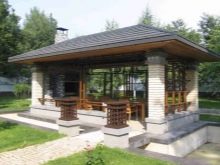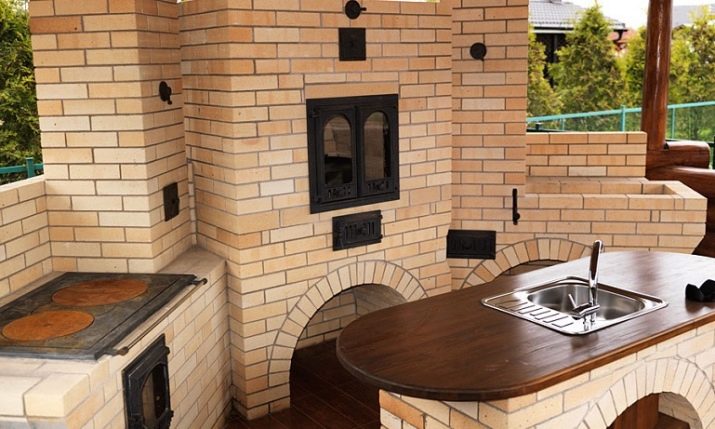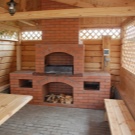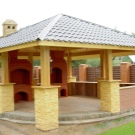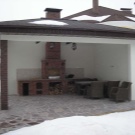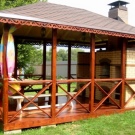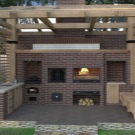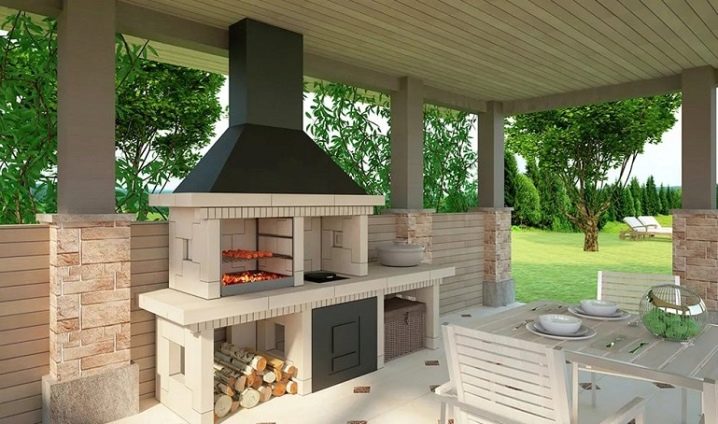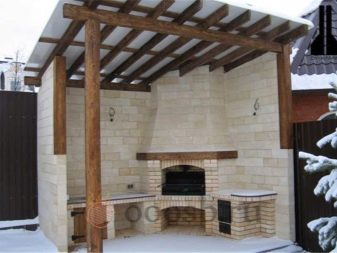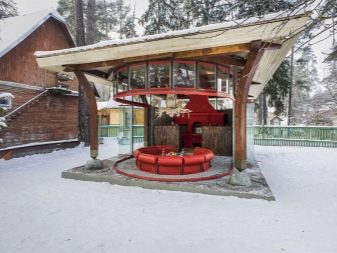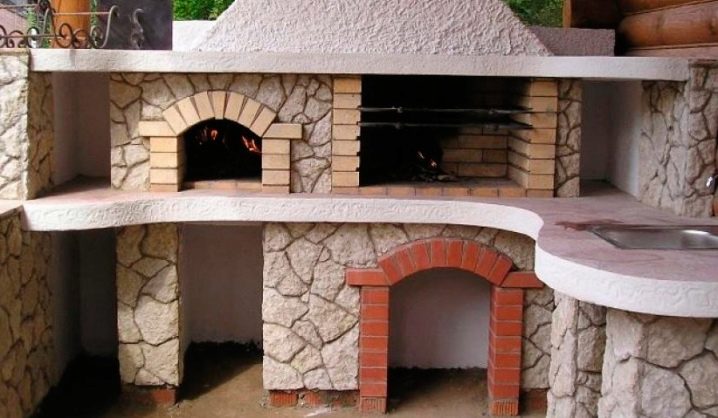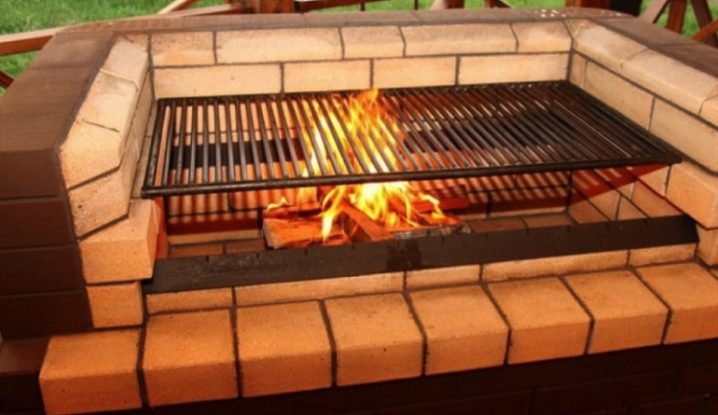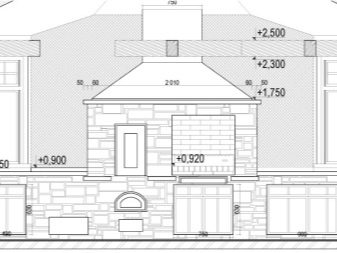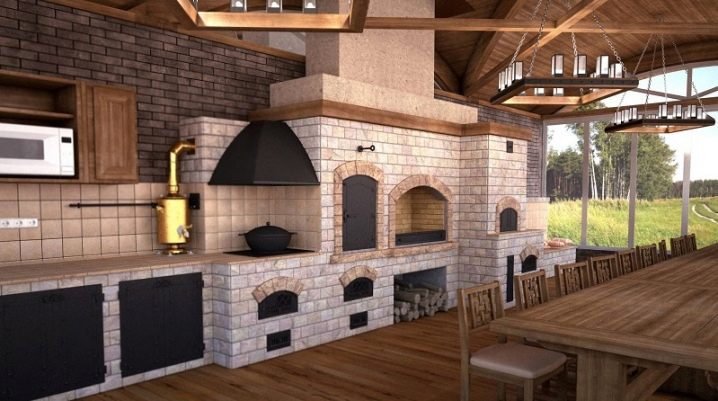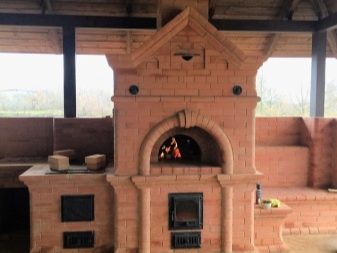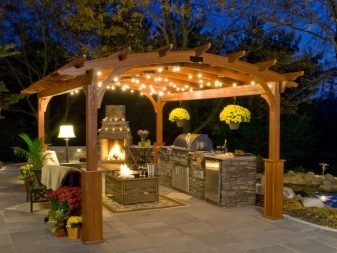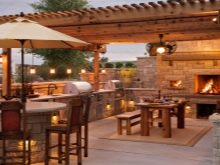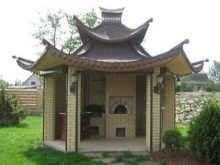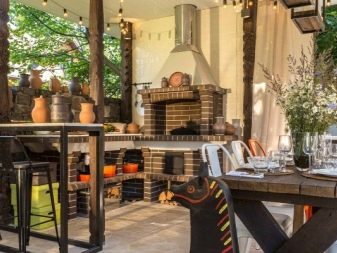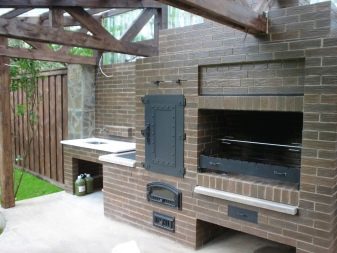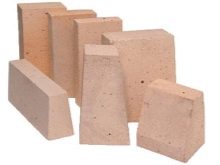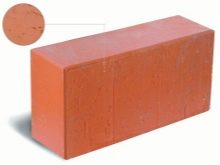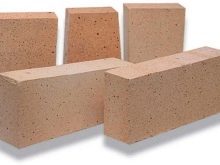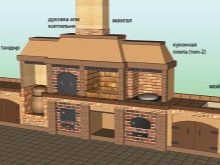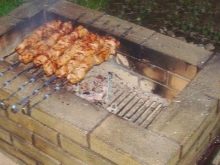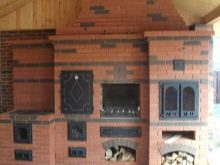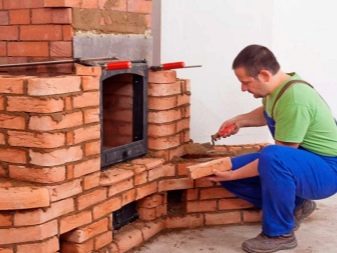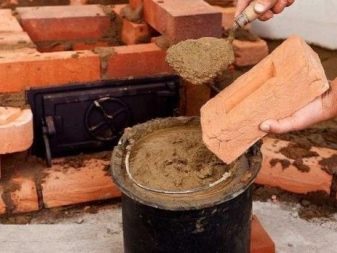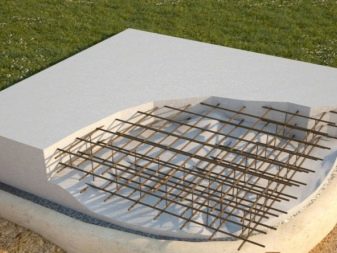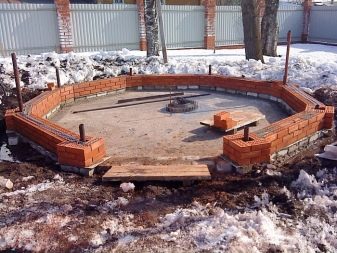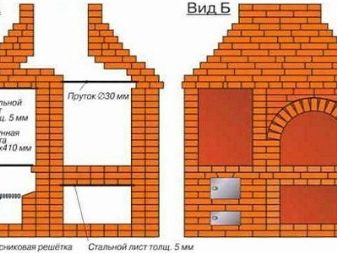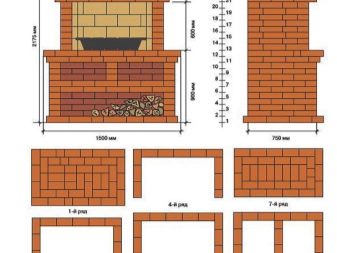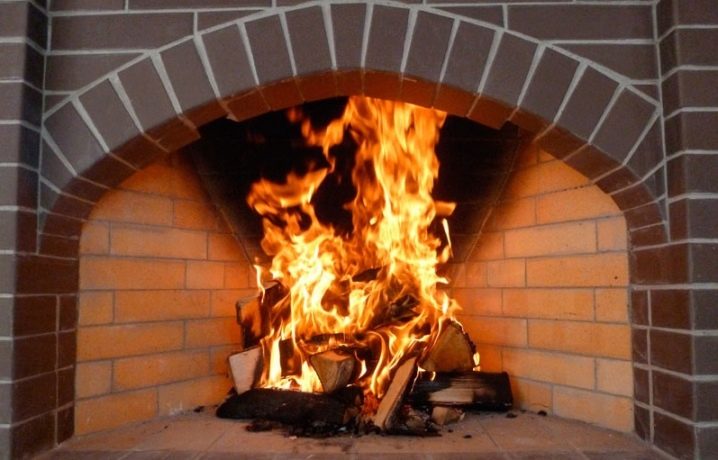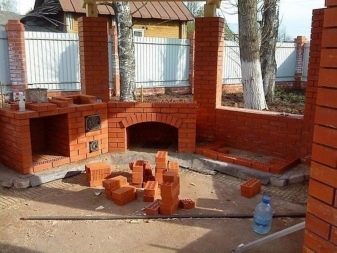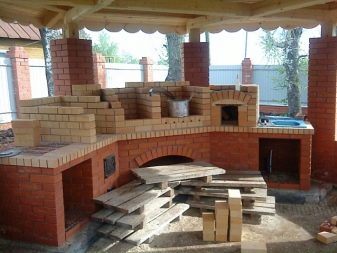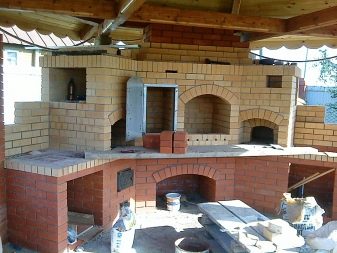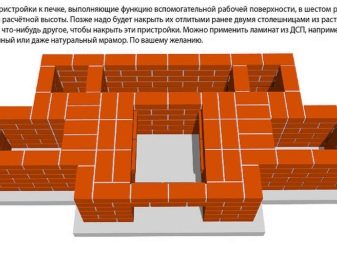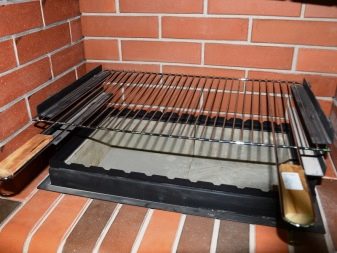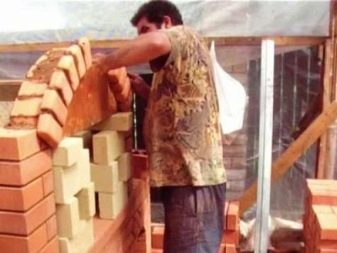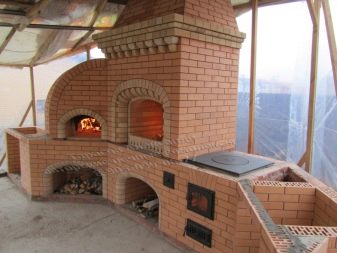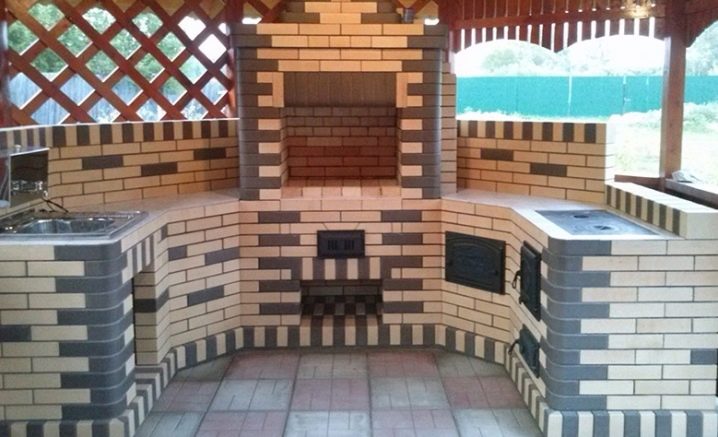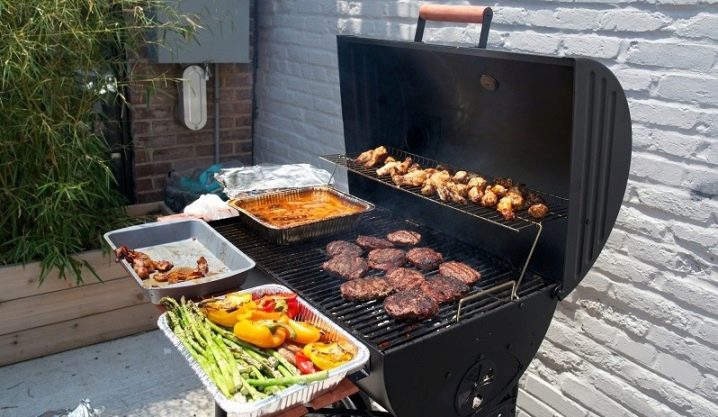Brick stoves in the arbor: features of creation
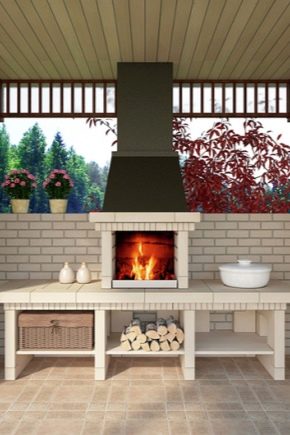
A brick stove in the gazebo is a convenient device for cooking and not only. In addition to the variety of dishes available for cooking, it will extend the season of outdoor recreation, thanks to the transferred heat. A brick built stove is a durable and practical construction. Consider the features of creating data devices.
Special features
A luxurious brick stove with a barbecue area, a hob, and other attributes is a complex device that is not easy to build without experience in the construction industry.The main feature of a brick stove is the obligatory presence of a concrete foundation. If the gazebo is made in a light version and has a plank floor, you should do a portable barbecue. If you decide to build a stone stove, it is worth more to understand the design features.
An outdoor stove built by own hands must meet a number of requirements. Consider the main criteria.
Security
Do not allow parts of the stove to come into contact with objects that can easily ignite. As protection, you must use special screens. It is worth paying attention to this feature if the stove is located in a wooden arbor.
Moisture and cold resistance
The stove in the gazebo is used during the warm season, but the design will be located in the yard all the time. Therefore, materials for construction should not absorb moisture. The accumulated liquid, freezing, will break the brick, because of which cracks may appear, and the stove itself will begin to collapse.
It is necessary to use the right type of material for the construction. They must be refractory.
Heating temperature
Even with strong heat inside, the external part of the device should not be heated. Hot surfaces can cause burns if accidentally touched. This can be eliminated with a special surface finish. As a non-flammable lining fit tile and stone.
Environmental friendliness
The material chosen for the outdoor stationary stove should not contain harmful components that, when heated, will spread, harming the health of those who will be in the gazebo.
Device
The ideal variant of the stove device is the initial design of the gazebo with barbecue. Sometimes the capital stove is placed separately from the building, but more often it is located inside the gazebo. The location of the structure should be safe and convenient. The stove must not impede the free movement.
The location of the stove must be selected downwind in relation to the apartment building. You can not equip the capital furnace on the street near the apartment building. In addition, it should not be installed near growing trees. The area allocated for cooking can be finished with granite or tile for greater security.
For any business will require an initial project. In its development it is necessary to take into account the weight, dimensions, appearance of the structure. In construction work it is important to strictly follow the created project, reflecting all the nuances of construction on the drawings.
At the same time carry out each step to create a furnace should be thoroughly and accurately. Compliance with the technology will allow you to get a quality product that will serve for many years, pleasing the owners of the house with good work.
Species
Examples of stoves for gazebos involve the creation of a variety of options.
It may be:
- Russian stove;
- heater;
- fireplace;
- B-B-Q;
- complexes with different modules.
Russian stoves are traditional for Russia, but today barbecues and barbecues are more common. This Russian stove in the gazebo is unlikely to fit, as it has a massive size. To save space, they usually use a more rational version of the mini-Russian stove. The device is rather a brazier, which is simply made in the Russian style.
Such a device, equipped with a stove, is convenient to use not only on the street: it is also suitable for the kitchen of a private house.The grill and stove allow you to cook many options of dishes (except for baking baked goods). Classic stationary grill - a find for small areas. Despite its small size, the device allows you to cook several dishes at the same time on the grill and skewers.
Kitchen modular complexes usually include a spit, grill, smokehouse, stove, on which a cauldron can be installed. The device is suitable for several tasks. But the complex requires a strong monolithic foundation, which can be attributed to the shortcomings of the structure. Its construction is quite troublesome. Fireplace, which is equipped in homes for aesthetic purposes and heating, can be built in the gazebo.
Stove-fireplace on the street - a useless device for cooking. It is rather necessary to enhance the aesthetic functions.
How to choose?
The choice of material for the construction of the furnace today is quite wide. On the modern market of building materials, leading brands offer an extensive range.
You can use several types of bricks.
- Heat resistant. This brick has a red tint, it has no holes.
- Ceramic (made of clay). Keeps high temperatures, qualitatively accumulates heat. Visually, this type of clay bricks is difficult to distinguish from other options that do not have heat-resistant characteristics.
- Chamotte brick. It possesses refractory qualities, but it is more often used as facing or for decorative inserts.
In construction projects, the use of materials in an integrated manner is usually assumed. But you can use one type of material for the entire structure. Its functionality depends on the choice of materials for the construction of an outdoor stove.
For example, if the complex is protected during the construction process with a layer of thermal insulation, then the center can be used year-round. The design can work not only for cooking, but also for heating.
The device type grill can be constructed in the form of an oven. The mode of operation of the device will remain similar to the brazier. At the first stage of use, the device is well heated. Then you can put meat on skewers in the firebox. Due to the uniform heating, the kebabs will not need to be constantly rotated, and there is also no need to follow the cooking process.The leader in the choice of design is a barbecue, it is built on the prototype of a mobile roaster. The stove is distinguished from a barbeque by a stationary grill on which to cook meat.
Multifunctional designs involve the placement of skewers. This stove has a special interest in many owners of private homes.
The stationary design assumes the mandatory protection of the flame from precipitation and wind. Indoor device contributes to the long-term preservation of heat. Street barbeques are made of metal. The case of a stationary stove can be made of bricks with high refractory characteristics. In the gazebos, stationary complexes are often placed, which include furnace equipment, sewage systems, a sink, furniture, tables (anything that can be useful for outdoor cooking).
Building
The dimensions of the stationary stove are small, so the amount of material for the manufacture will need a little.
You can use the standard scheme:
- ordinary brick - 360 pieces;
- chamotte brick - 120 pieces;
In addition, you will need a solution of clay and sand. At the same time it is important to have a nuance: a mortar designed for masonry,there must be a consistency that will prevent it from sticking to the tool, but at the same time will not allow spreading over the surface of the brickwork. The stages of construction are directly interrelated with the type of construction chosen.
The main point in the work - the construction of the foundation. Consider this process in more detail.
Foundation
When building a stove and a gazebo at the same time, the base under these two structures can be the same. When installing the stove in the finished gazebo, you need to choose the right place. The principles of arrangement are usually common with the arrangement of a fireplace. For example, lack of draft and safety is important.
Under the base they dig a pit, the depth of which should be 50-60 cm. At the bottom of the pit lay the gravel and tamped. The next stage is the reinforcement, you need to make a grid of wire, and install a formwork at the edges. Next, pour concrete pit to a level below 5 cm from the floor.
Leave to set depending on weather conditions for about 20-25 days. For the prevention of chipping the hardening concrete is recommended to moisten with water. After the period of hardening, lay a waterproofing (for example, roofing felt).The next mandatory step is the construction of the stand.
Erection
The stand fits with the drawing order. As the material is suitable hollow brick. If the work is done by hand, it is necessary to take into account the dressing, specifying the evenness of the rows and corners of the level. Pay special attention to the first six rows of the order. They will be a place for shelves under the table top. 7th row - overlapping of the hearth, 8th row - ligation of the ceiling and the beginning of the bottom of the furnace.
Firebox
Performing the 9th row, you can use fireclay. When lining the main attention should be paid to the thickness of the solution: it should not be more than 3 mm. To ensure thermal expansion of this type of brick, the transition between the two types must be at least 20 mm. If there is no transition, the fireclay will crack during use, and the firebox will deform.
The temperature gap spread basalt cord. It is non-flammable, has thermal insulation properties. The 10th row is a continuation of the furnace with simultaneous contraction. 11th row - the completion of the laying of the furnace. Here it is already possible to install the grate (grate).
Working surface
Here it is possible to use a stone or tile.Both materials possess the necessary properties.
Brazier
The brazier is formed starting from the 12th row (from the ledge into one brick under the skewer). The space of the broiler should be laid out from 13 to 16 rows. The formation of the walls ends on the 17th row.
The vault
If the experience in the arrangement of stoves is small, then it is better to form the arch according to a template prepared from cardboard. The pattern must be placed on the bricks, noting the point marker. The bricks are then cut by the marks, forming a set. For better stability, you can make a frame of solid wood. It can be removed after complete drying of the solution.
Next, build a chimney. Consider the insulation of the structure in the place of contact with the roof of the gazebo. Insulate the floor near the stove, insulate the walls and ceiling. The installation phase of the hood and chimney can be simplified, since the components can be purchased in finished form. Sheet metal can be used instead of brick at this stage.
Once the masonry is formed, you can arrange the cutting table. The worktop must match the size of the brickwork. As a material for the countertops, you can use wood, stone slab, plywood and cast iron.The latter option can act as a built-in cooking surface on which it will be possible to prepare food.
The table top can be equipped with a sink. This is convenient, but requires the supply of water pipes. Between the bricks and the edge of the tabletop must be a special silicone sealant with waterproof properties. For an aesthetic design of the space, the niches under the tabletop can be decorated doors. Material for them can be very different.
Nuances of use
If the stove is made in compliance with the technology, it will serve for a long time. When choosing a place to build, you should immediately be guided by the main principles that include the direction of the wind rose and the presence of high-quality territory. Most often, the furnace is used so that the fumes and sparks do not fall in the direction of the house and other economic structures. To massive construction harmoniously looked in the gazebo, it is important to choose the right lining.
It is assumed that the area of the foundation in front of the gable part of the furnace should be made of a material that is resistant to fire, preferably with a rough surface. For example, tiles made of porcelain stoneware would be ideal.The brick construction itself can remain without finishing. The stove can be plastered or lined with ceramic tiles.
The appearance of the stove will depend on the chosen finishing option, but at this stage everything depends on the decisions of the owner of the structure.
Consider the other nuances.
- The main nuances of using the stove in the gazebo are incorrect operation of the chimney and improper operation. For example, your brick kiln will quickly become worthless if you fill up fuel with water. Such a method will lead to the destruction of the building after several sessions of use.
- Problems with pipes often occur due to gusts of wind. Therefore, the design is important to arrange so that there is no reverse thrust. Otherwise the arbor will be filled with carbon monoxide.
- Another problem with pipes of outdoor stoves is precipitation. Therefore, gazebos with a stationary stove are often equipped with a brick or metal frame. Roof structures covered with professional sheets or tiles.
- The ideal location of the furnace in the gazebo - in the end part with a turn back to the outside. So the combustion products from the stove will not get inside. A wide wall of stone oven box will keep warm.
The use of stationary stoves in the gazebos is most common in cafeterias and outdoor restaurants. For a private estate or cottage, it is more convenient and practical to use mobile devices that are easy to maintain. Devices can be installed in any gazebos without fear of fire or smoke. Ready-made ovens for gazebos are produced in various solutions.
Modular assemblies are very popular. The performance characteristics of such devices correspond to the parameters of a good homemade brick oven. The main disadvantage of the purchase options is their high cost. Reduce spending can, if you buy the modules gradually. One or another unit of the integrated device can always be purchased separately.
In this video you will find step by step instructions for the construction of a gazebo with a brick oven.
